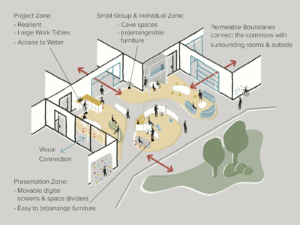How To Choose The Best Tools To Successfully Transition To Common Core

By: George Rislov
How To Choose The Best Tools To Successfully Transition To Common Core first appeared on The Navigator by CompassLearning on February 10, 2014.
Digital tools have helped thousands of teachers and schools become more efficient and effective in supporting student learning. But, how can these tools help achieve the massive and complete change required by the new Common Core State Standards? Here, a leading educator proposes a few questions that school leaders need to ask to ensure they’re locating and using the most innovative and appropriate tools for managing this sweeping transformation.
How does your product’s assessment system compare to the Common Core assessment systems currently in development?
Vendors should be moving away from traditional fill-in-the-oval multiple choice assessments and toward developing more open-ended and performance-based questions that support college and career readiness. Additionally, vendors should be closely following the work of the PARCC and Smarter Balanced assessment consortiums currently funded to develop K–12 Common Core assessments in ELA/literacy and math. As additional details continue to emerge from each consortium, quality companies are building similar item types into their products that mirror those being developed by PARCC and Smarter Balanced.
Explain how all students, regardless of skill and ability level, can be successful using your product.
A key criterion for Common Core materials and tools is that they provide supports for special populations such as students with disabilities, English language learners, and gifted and talented students. Products should provide “just what students need” — that is, the opportunity to acquire knowledge and skills through learning strategies that are personalized and differentiated to their unique abilities, learning styles, and preferences. For struggling learners, products should employ clear examples and focused activities that move from the simple to the complex and from the concrete to the abstract in a manner that provides scaffolded support. Intervention activities should be delivered through engaging, highly interactive, and individualized learning paths that provide targeted instruction on specific skills and concepts. Instant feedback and repetitive skill development can ensure students are mastering critical objectives before moving on to more complex materials. On-grade and accelerated learners should be given opportunities to work at their own pace on projects that encourage them to apply, deepen, and extend their learning.
How does your product help students make the transition to the Common Core State Standards?
There’s a real concern for the middle or high school student who’s suddenly accountable for the rigorous high standards of Common Core, without the foundational knowledge required to succeed. No doubt, there will be knowledge gaps, particularly in the beginning. Vendors need to be sensitive to this and prepared to help students through the transition. Product offerings should include fully-integrated systems of learning and assessments. This evidence-based approach to understanding what students know and don’t know should yield the necessary formative data for teachers to assign differentiated learning paths and continually adjust instruction in response to student performance. This will go a long way toward closing gaps and keeping learners on pace to meet college- and-career- ready standards.
George Rislov is Senior Marketing Manager at Compass Learning, working primarily in the area of partner marketing. As a former social studies teacher and education policy maker, he believes in providing students the tools they need to be independent and critical thinkers in a rapidly changing world.
CompassLearning is a Getting Smart Advocacy Partner.




0 Comments
Leave a Comment
Your email address will not be published. All fields are required.